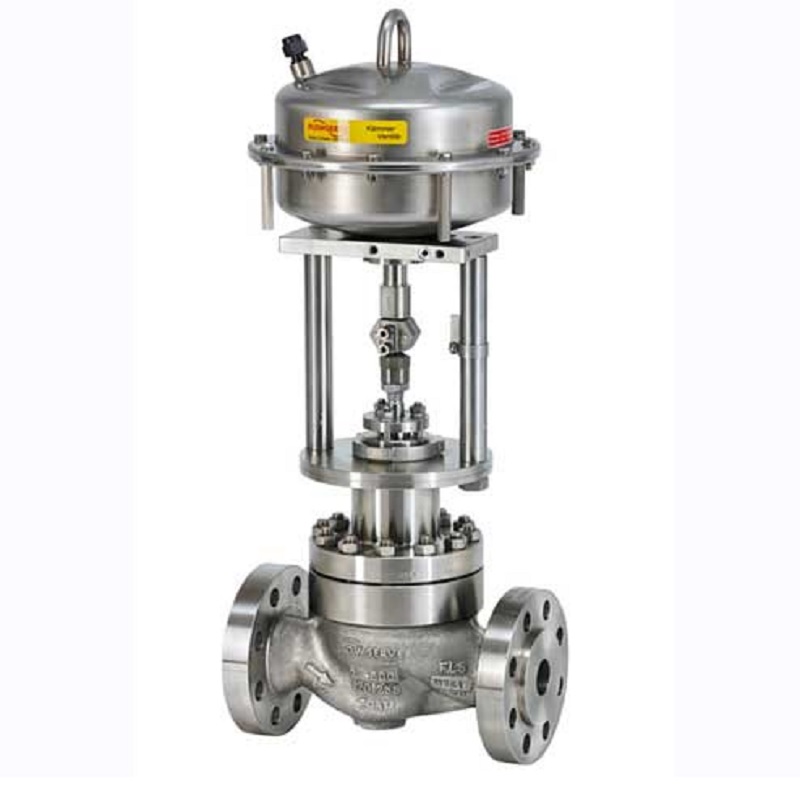The Function of Control Valves in Liquid Circulation Management Systems
The Function of Control Valves in Liquid Circulation Management Systems
Blog Article

Maximize Power Financial Savings and Convenience With Advanced Structure Automation Controls
In the world of modern architecture and center administration, the integration of sophisticated structure automation manages stands as a critical advancement. By using the power of automation, buildings can adjust, respond, and progress in means that were when unimaginable.
Power Efficiency Benefits
Energy efficiency benefits can dramatically reduce energy intake and functional costs in buildings. Energy-efficient systems, such as sophisticated building automation controls, can optimize the usage of resources like lighting, home heating, and air conditioning, leading to reduced energy costs over time.
Furthermore, enhanced power efficiency can extend the lifespan of structure devices and systems. By operating extra successfully, HVAC systems, light, and other structure elements experience much less deterioration, resulting in decreased upkeep and replacement costs. In addition, energy-efficient buildings frequently regulate higher residential property values and rental prices, offering lasting monetary benefits to owners.
In addition, energy efficiency can boost passenger comfort and efficiency. Correctly managed indoor settings with optimal lights and thermal conditions create an even more helpful and pleasant office, causing boosted employee contentment and performance. Overall, the energy performance benefits connected with advanced building automation controls are complex, encompassing expense financial savings, environmental stewardship, and passenger health.
Boosted Comfort Control
Enhancing convenience control in structure environments needs an innovative integration of sophisticated automation systems for optimum owner wellness. By using innovative structure automation controls, centers can tailor the interior setting to fulfill the specific needs and choices of owners. These systems enable precise regulation of ventilation, lights, and temperature, developing a comfy and efficient atmosphere. Resident complete satisfaction and productivity are very closely connected to thermal convenience, making it important to have systems in position that can adapt to transforming problems in real-time.
Improved comfort control goes beyond standard temperature changes. It consists of attributes such as individualized setups, occupancy sensing units, and natural light application to produce a receptive and dynamic setting. By incorporating these sophisticated controls, structures can not only boost convenience however likewise improve power performance by enhancing system procedures based on actual tenancy and use patterns. Inevitably, focusing on passenger convenience through advanced automation systems brings about a more pleasurable and healthier interior setting.
Functional Effectiveness Improvements

Furthermore, the execution of real-time surveillance and analytics devices enables structure operators to determine energy inefficiencies and operational abnormalities promptly. By continuously keeping track of energy usage patterns and system efficiency metrics, modifications can be made in real-time to enhance energy usage and make sure peak operational efficiency. control valves. Additionally, including demand response approaches right into structure automation controls can even more boost operational performance by dynamically adjusting power usage based upon grid conditions and pricing signals
Indoor Climate Optimization
Reliable interior environment optimization is an essential element of structure automation controls, making certain owners' comfort and wellness while taking full advantage of power cost savings. By utilizing innovative sensing units and controls, building automation systems can constantly keep an eye on and adjust temperature level, humidity levels, air top quality, and ventilation to create an optimum indoor atmosphere. Maintaining comfy and consistent conditions not just enhances owner fulfillment yet likewise enhances performance and total health.
Interior like this environment optimization additionally plays a critical duty in power performance. By fine-tuning air conditioning, heating, and ventilation systems based on real-time information and occupancy patterns, building automation controls can substantially minimize energy consumption - control valves. Executing strategies such as demand-controlled air flow and thermal zoning can assist decrease power waste while making sure that each area of the structure gets the necessary conditioning.

Lasting Atmosphere Creation
Structure automation official statement regulates not only maximize indoor climate problems for energy efficiency and occupant convenience but additionally lay the foundation for creating a lasting environment via calculated management of resources and systems. By integrating innovative building automation modern technologies, such as sensing units, actuators, and intelligent software application, facilities can change and keep track of power use in real-time to reduce waste and decrease their carbon footprint. These systems enable anticipating upkeep, identifying possible issues prior to they intensify and maximizing devices performance to enhance durability and performance.
Moreover, sustainable setting production extends beyond energy administration to incorporate water conservation, waste reduction, and indoor air top quality renovation. Building automation controls can regulate water use, discover leakages, and make certain proper waste disposal methods, adding to general sustainability initiatives. Furthermore, by controlling and keeping track of ventilation and filtering systems, these technologies boost owner wellness and performance while reducing power consumption related to a/c procedures.
Final Thought
In final thought, advanced building automation controls offer significant advantages in regards to power financial savings, convenience control, functional effectiveness, indoor climate optimization, and producing a sustainable environment. By executing these controls, buildings can achieve optimum efficiency while lowering power intake and enhancing owner comfort. It appears that moved here the usage of innovative automation innovation is critical in improving building efficiency and producing a more sustainable future.
Power performance benefits can considerably reduce power usage and functional costs in structures. In general, the power efficiency benefits connected with advanced building automation controls are complex, including cost financial savings, ecological stewardship, and resident health.
In addition, incorporating demand reaction methods right into building automation controls can better boost functional performance by dynamically adjusting power use based on grid conditions and pricing signals.
Building automation controls not only maximize indoor climate problems for energy efficiency and resident comfort yet additionally lay the structure for developing a lasting setting with tactical administration of sources and systems.In conclusion, progressed structure automation manages offer significant benefits in terms of energy savings, convenience control, functional performance, interior environment optimization, and creating a sustainable environment.
Report this page